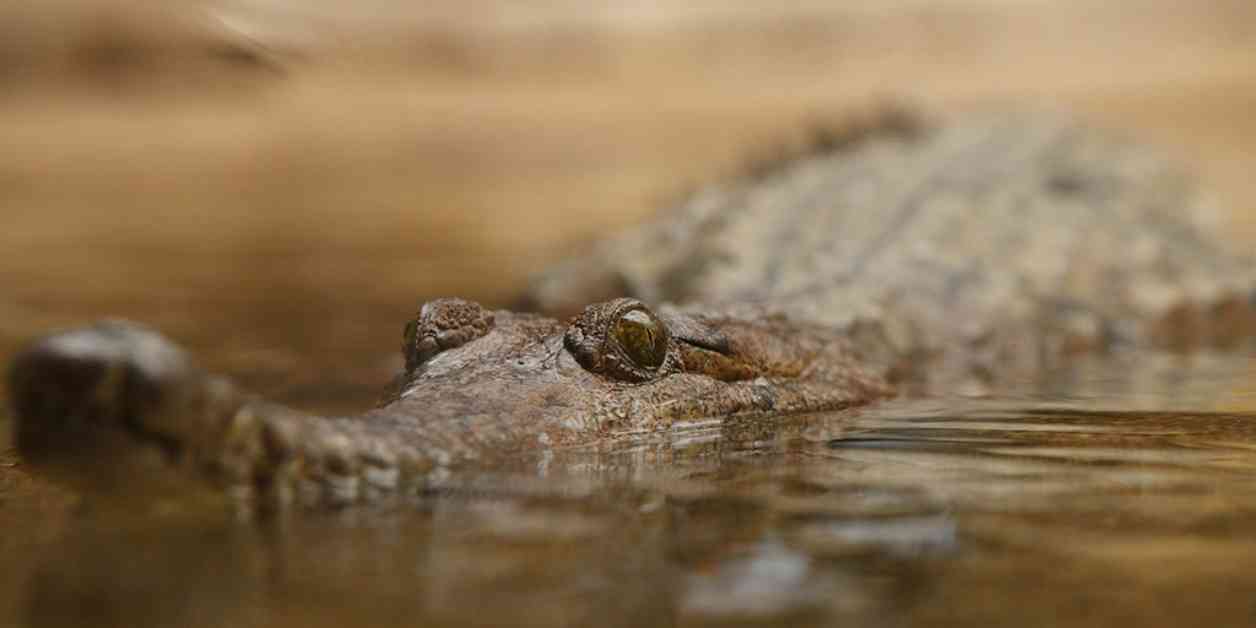The Fort Worth Zoo in Texas recently celebrated a significant milestone in conservation efforts with the successful hatching of critically endangered gharial crocodiles. This marks the first repeated breeding success for the zoo, making it the only institution in North America to produce multiple offspring of this rare species. The emergence of two hatchlings this summer is a testament to the dedication and expertise of the zoo’s staff in preserving these iconic reptiles.
Researchers in Australia have raised concerns about the sharp decline of freshwater crocodiles due to their consumption of a toxic and invasive species of toad. In an innovative approach to protect the crocodiles from ingesting these harmful toads, scientists have developed a stomach-churning solution involving a nausea-inducing chemical. By baiting the crocodiles with dead cane toads from which the toxin has been removed and adding the chemical inside, the reptiles quickly learn to avoid toads as a potential food source in the future.
The invasive cane toads were originally introduced to Australia from Hawaii in 1935 as a failed pest management strategy. However, these toxic amphibians have since spread throughout tropical regions of the country, posing a significant threat to native wildlife, including freshwater crocodiles. When crocodiles consume the toxic toads, they experience seizures and often succumb to a painful death due to massive cardiac arrest, as described by Georgia Ward-Fear, a conservation scientist at Macquarie University in Sydney.
Effective Conservation Strategies
The decline in freshwater crocodile populations in tropical Australia has raised alarms among conservationists, prompting urgent action to protect these apex predators. The Royal Society Publishing study highlights the critical role of apex predators in maintaining ecological balance and emphasizes the importance of conserving freshwater crocodile populations. With some populations facing a decline of over 70% due to lethal ingestion of toxic cane toads, innovative solutions are needed to safeguard these vulnerable reptiles.
In an effort to mitigate the impact of toxic toad consumption on crocodile populations, researchers deployed nearly 2,400 cane toad carcasses laced with the nausea-inducing chemical in areas where crocodiles are known to hunt. The crocodiles quickly learned to avoid the toad baits while continuing to consume control baits, such as chicken, demonstrating their ability to adapt and learn from their experiences. The repeated baiting over successive years has shown positive impacts on crocodile survival, indicating the effectiveness of this taste aversion method in deterring crocodiles from consuming toxic toads.
The success of the conservation strategy has led to a significant reduction in crocodile death rates in the region, with some areas reporting up to a 95% decrease in mortality. This groundbreaking approach has not only benefited crocodile populations but has also been adopted by Indigenous rangers and wildlife management agencies to further protect these iconic reptiles. The collaborative efforts of researchers, conservationists, and local communities have proven instrumental in safeguarding the survival of freshwater crocodiles in Australia.
Environmental Impacts and Conservation Challenges
The introduction of invasive species like cane toads can have devastating consequences for native wildlife and ecosystems. In the case of Australian freshwater crocodiles, the proliferation of toxic cane toads has posed a serious threat to their survival, leading to population declines and ecological imbalances. The challenges of managing invasive species and mitigating their impacts require innovative solutions and collaborative approaches to protect vulnerable species like the freshwater crocodile.
The alarming symptoms exhibited by crocodiles that have ingested toxic toads highlight the urgency of addressing the issue to prevent further declines in crocodile populations. From cardiovascular and digestive system haemorrhages to seizures, death rolls, and limb paralysis, the effects of toad poisoning on crocodiles are severe and often fatal. Conservation efforts must prioritize the implementation of effective strategies to reduce the consumption of toxic toads by crocodiles and ensure their long-term survival in their natural habitats.
As researchers continue to monitor the effectiveness of the taste aversion method in deterring crocodiles from consuming toxic toads, ongoing research and monitoring efforts are essential to evaluate the long-term impacts of this conservation strategy. By studying the behavior and responses of crocodiles to the baiting approach, scientists can refine and optimize the method to enhance its efficacy in protecting crocodile populations from the threats posed by invasive species like cane toads.
Future Conservation Initiatives and Community Engagement
The success of the nausea-inducing chemical baiting strategy in reducing crocodile mortality rates underscores the importance of innovative conservation approaches in addressing complex environmental challenges. As conservationists strive to protect endangered species like the freshwater crocodile, collaboration with local communities, Indigenous groups, and wildlife management agencies is key to implementing effective conservation initiatives. By engaging stakeholders and raising awareness about the importance of preserving crocodile populations, we can inspire collective action to safeguard these iconic reptiles for future generations.
Looking ahead, the ongoing conservation efforts to protect freshwater crocodiles from toxic cane toads serve as a model for proactive and adaptive conservation strategies. By leveraging scientific research, community involvement, and technological innovations, we can enhance our ability to mitigate the impacts of invasive species and promote the coexistence of native wildlife in their natural habitats. As we continue to learn from the successes and challenges of conservation initiatives, we can work together to ensure a sustainable future for endangered species and the ecosystems they inhabit.
In conclusion, the innovative approach of using a nausea-inducing chemical to deter crocodiles from consuming toxic cane toads represents a significant advancement in conservation efforts to protect vulnerable reptile populations. By combining scientific research, community engagement, and adaptive management strategies, we can address the complex challenges posed by invasive species and work towards preserving the biodiversity and ecological balance of our natural world. Through collaborative conservation initiatives and ongoing monitoring and research, we can strive to safeguard the survival of endangered species like the freshwater crocodile and promote a sustainable future for our planet’s rich and diverse wildlife.




